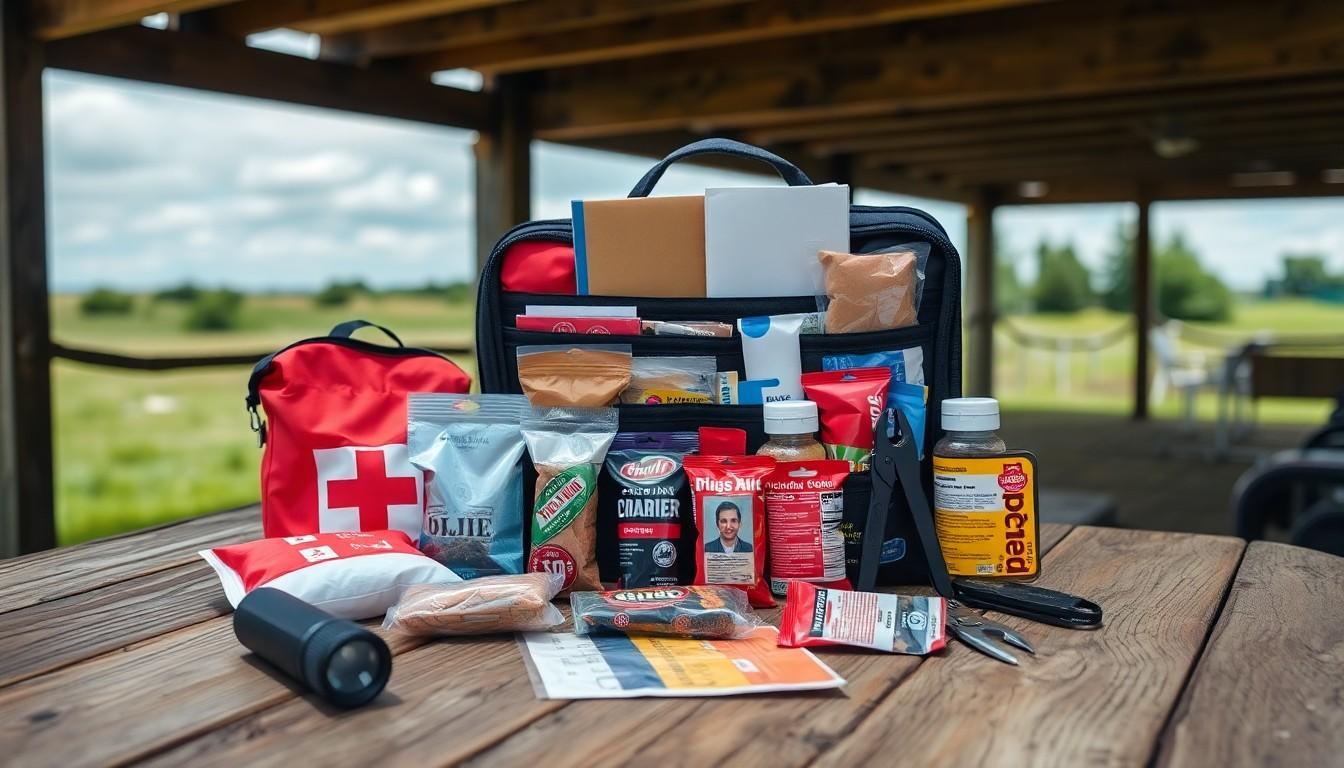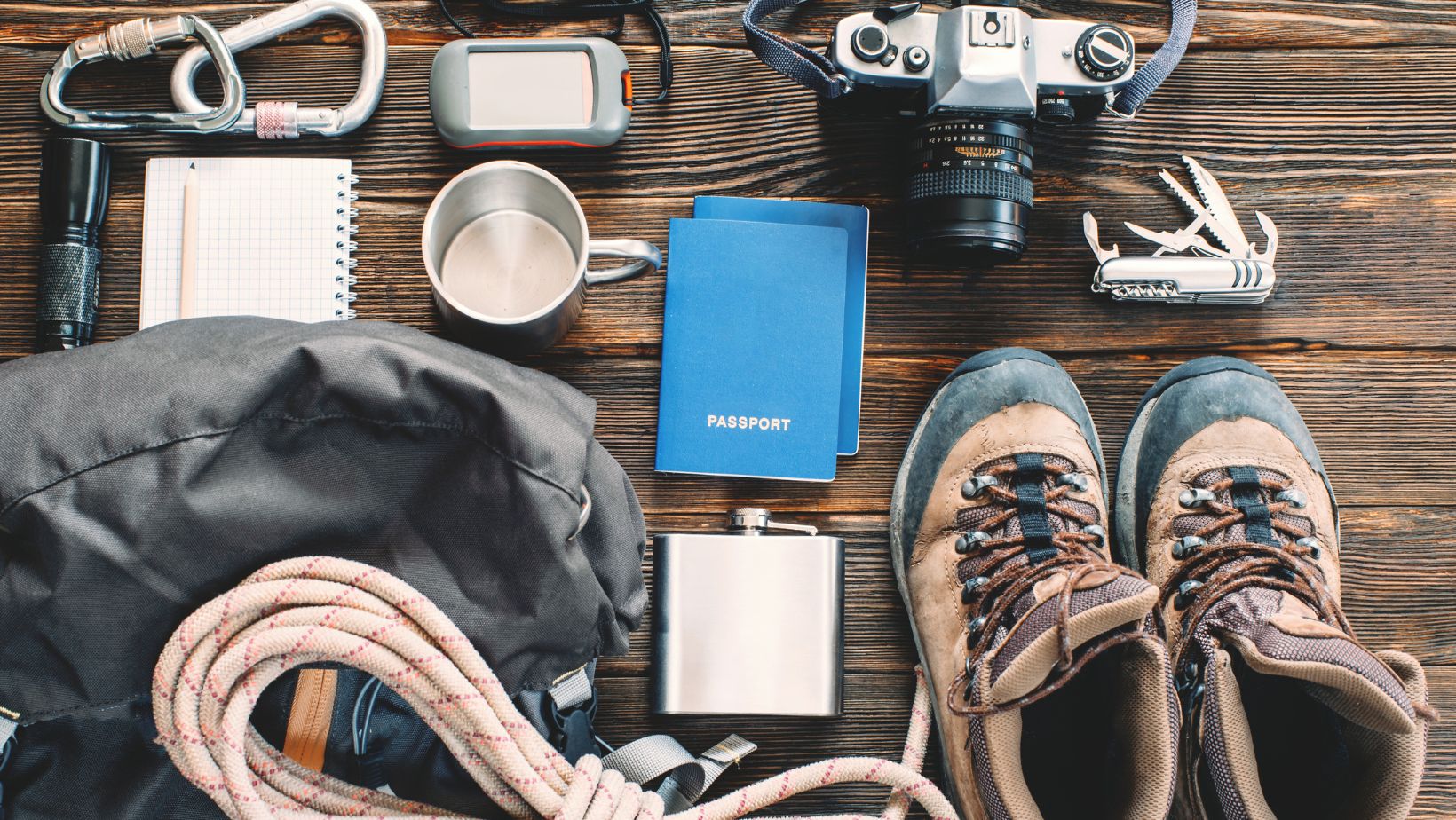In a world where the unexpected seems to be the new norm, being caught off guard is no longer an option. Emergency preparedness gear isn’t just for the doomsday preppers or the overly cautious; it’s for anyone who wants to be ready for whatever life throws their way. From natural disasters to the occasional surprise power outage, having the right gear can mean the difference between a minor inconvenience and a full-blown adventure—complete with snacks, of course.
Imagine this: the lights flicker, the ground shakes, and you’re left rummaging through your junk drawer for a flashlight that probably runs on hope and good intentions. With the right emergency preparedness gear, you can skip the panic and dive straight into action. So, let’s explore what essentials can turn chaos into calm and ensure you’re always prepared—because who wouldn’t want to be the hero in their own action movie?
Emergency Preparedness Gear
Emergency preparedness gear plays a crucial role in navigating unexpected situations. Acquiring the right tools ensures individuals face challenges confidently.
Understanding Your Risks
Assessing potential risks helps in selecting appropriate emergency gear. Natural disasters, such as hurricanes, earthquakes, or floods, impact different regions distinctly. Knowing specific threats in one’s area influences gear choices significantly. For instance, areas prone to wildfires require fire-resistant items, while coastal regions benefit from water filtration systems. Evaluating personal circumstances, such as family size or health needs, also guides the selection process. Understanding these factors leads to customized kits that enhance readiness.
Benefits Of Being Prepared
Preparedness offers multiple advantages during crises. Having emergency gear on hand cultivates a sense of security and confidence. Studies show that being equipped reduces anxiety and panic during emergencies. Essential supplies, like first aid kits and food rations, sustain individuals and families during outages, ensuring basic needs are met. Additionally, being prepared allows for quick action, potentially saving lives. Communities that emphasize preparedness often recover more efficiently and effectively from disasters, highlighting the broader societal benefit.
Types Of Emergency Preparedness Gear

Various types of emergency preparedness gear exist to address diverse needs and situations. Understanding these essential categories can significantly enhance personal and community readiness.
Survival Kits
Survival kits contain basic necessities for sustaining life during emergencies. They typically include water, non-perishable food, and tools for shelter. A three-day supply of food and water is standard for one person. Items like a flashlight, multi-tool, and a whistle also play crucial roles in survival situations. Customizing survival kits to reflect individual family needs offers additional benefits. Families with pets, for example, should include pet food and care items. Regularly checking and updating kits ensures that items remain fresh and functional.
First Aid Supplies
First aid supplies are vital for addressing injuries swiftly and effectively. A comprehensive first aid kit includes adhesive bandages, antiseptic wipes, and gauze rolls. It’s essential to also include medical items like pain relievers and allergy medications. For households with specific health needs, adding prescribed medications ensures everyone can manage health conditions during emergencies. Regular training on first aid procedures enhances response effectiveness. Keeping first aid kits easily accessible and well-organized contributes to quicker action in critical moments.
Communication Devices
Communication devices play a key role in maintaining contact during emergencies. Battery-powered or hand-crank radios provide vital information when electricity is unavailable. Utilizing two-way radios or emergency whistles can facilitate communication between individuals in different areas. Mobile phones also serve as essential tools, but it’s wise to keep portable chargers on hand. In remote locations, satellite phones can ensure connectivity even when cell towers are down. Establishing a family communication plan helps members stay connected and informed regardless of circumstances.
Choosing The Right Emergency Preparedness Gear
Selecting appropriate emergency preparedness gear requires careful consideration. Understanding personal needs is essential for effective planning.
Assessing Your Needs
Identifying specific risks drives individuals to choose relevant gear. Think about regional threats, such as floods, earthquakes, or tornadoes, to shape your selection. Family size and health considerations play pivotal roles, too. Anyone with pets should ensure their needs are included in the kit. Customization enhances the effectiveness of preparedness efforts. Involve all family members in this assessment to ensure everyone’s needs are recognized.
Evaluating Quality And Durability
Investing in high-quality gear provides reliability during emergencies. Examine materials and construction methods when making purchases. Gear designed to withstand harsh conditions lasts longer and performs better. Strong materials ensure that items function correctly when needed most. Opt for reputable brands with positive reviews for assurance. Researching product details can save individuals from wasting money on subpar items. Always prioritize gear that needs minimal upkeep while retaining functionality.
Maintenance And Upkeep
Proper maintenance ensures emergency preparedness gear functions effectively in crises. Regular attention to supplies and gear significantly enhances safety and readiness.
Regularly Check Supplies
Conducting regular checks on supplies helps maintain a state of readiness. During these evaluations, expiration dates on food and medications must be verified. Additionally, inspecting water supplies for contamination is crucial. First aid kits require assessment for missing items, ensuring all necessary components remain available. Batteries in flashlights and radios should be replaced proactively to prevent failures during emergencies. Finally, maintaining an inventory of items aids in recognizing needs and avoiding surprises.
Updating Your Gear
Updating gear is vital for adapting to changing risks and family needs. As personal situations evolve, it’s essential to reassess the contents of emergency kits. Incorporating new items, such as additional medications or pet supplies, ensures that preparedness remains comprehensive. Technologies also improve; upgraded communication devices may offer better reliability. Regularly reviewing the quality of gear helps identify worn-out items and necessitates replacements. Investing in newer, high-quality products supports overall preparedness and confidence during emergencies.
Prioritizes Safety And Resilience
Emergency preparedness gear plays a vital role in ensuring safety and confidence during unexpected situations. By investing in high-quality items tailored to individual needs and regional risks, individuals can significantly enhance their readiness. Regular maintenance and updates to these supplies are crucial for maintaining effectiveness and reliability.
Ultimately, being prepared isn’t just about having the right tools; it’s about fostering a mindset that prioritizes safety and resilience. As communities become more equipped for emergencies, the collective ability to respond and recover improves, benefiting everyone involved. Taking the time to prepare today can lead to a more secure tomorrow.

